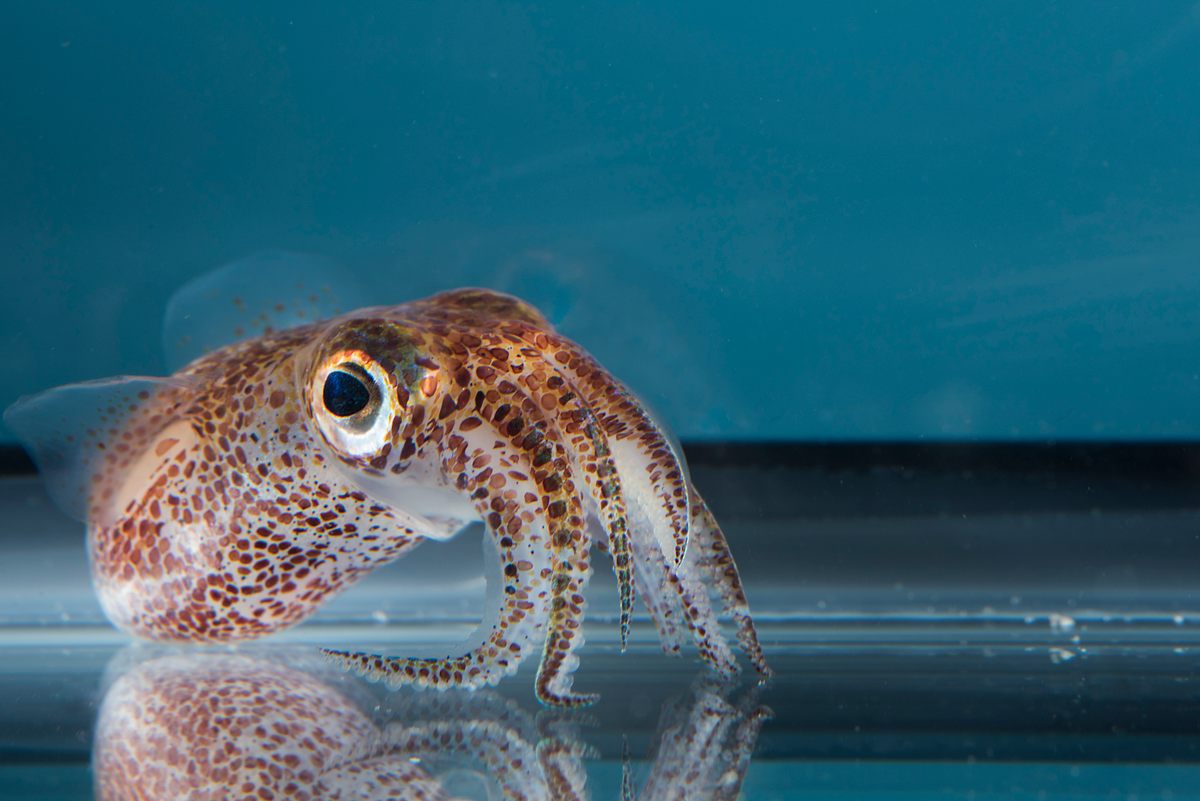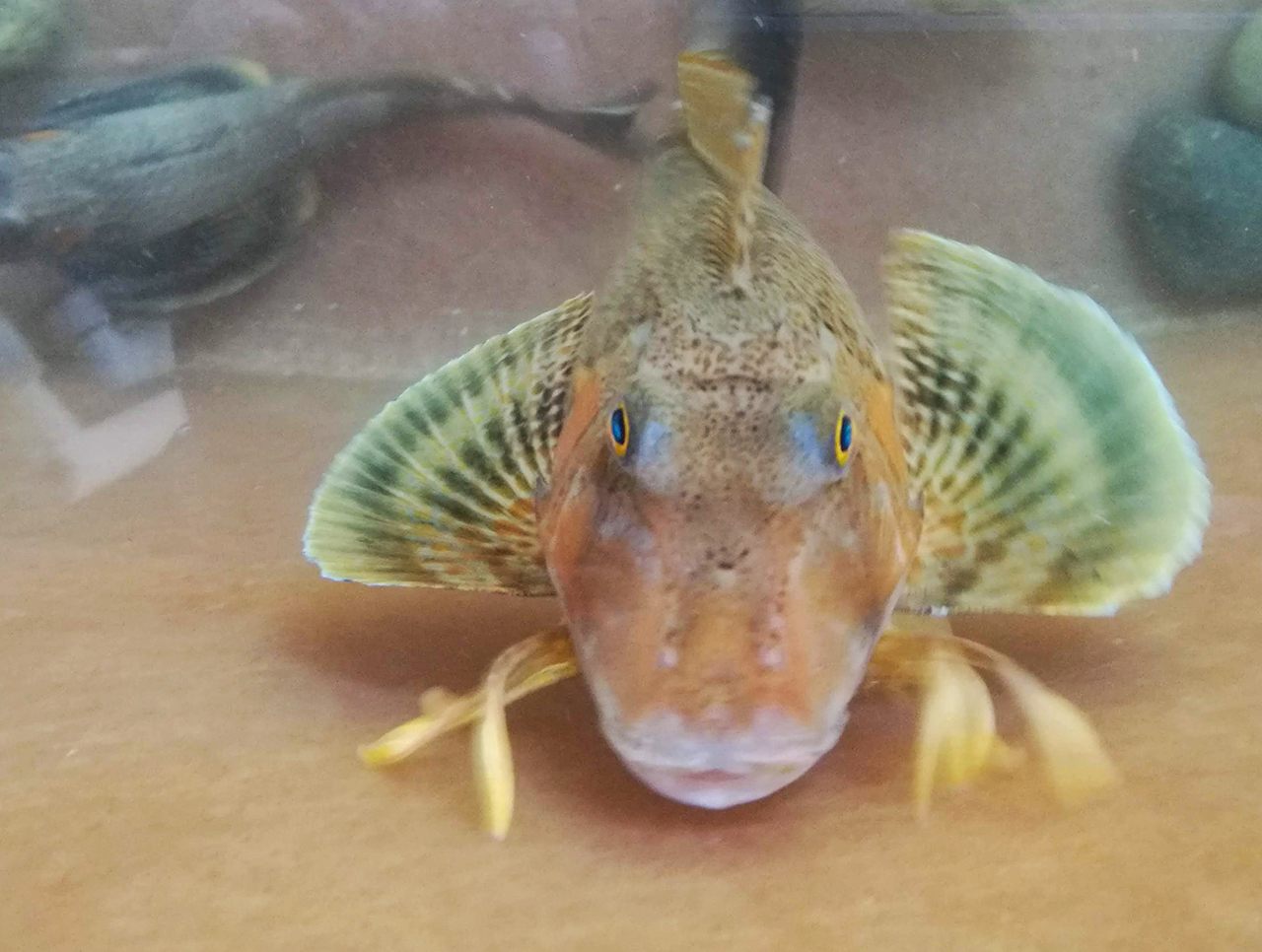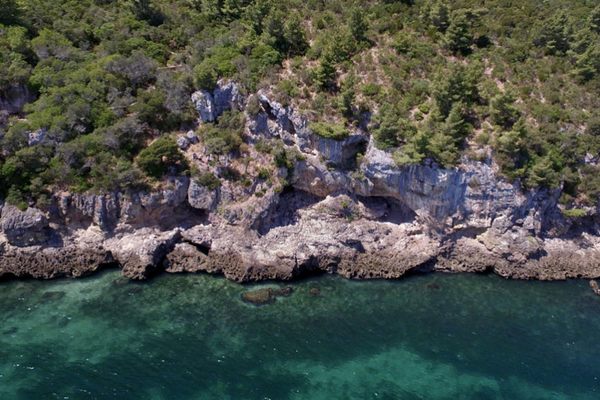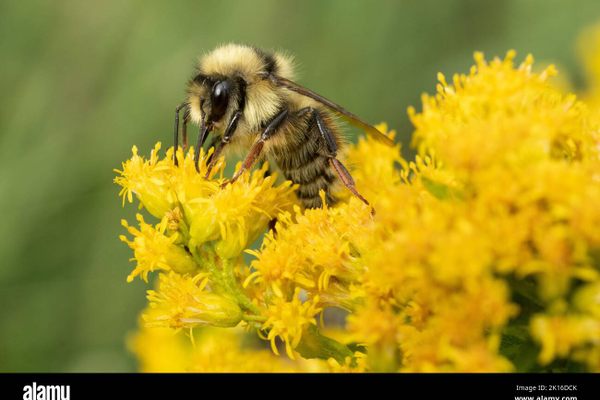The Woods Hole Lab Where Mysteries of the Deep Are Solved
Nervous sharks, flight-risk octopuses, and fish that walk are just a few of Dave Remsen’s cases.
It was a normal day at the lab for Dave Remsen—until one of the guests escaped from its room. The alarm was raised by a staffer, and a hunt ensued. After some frantic searching and mild panic, the guest was located, then scooped up—carefully—and plopped back into their tank.
“They’re escape artists,” Remsen explained as he peered into a tank containing another wily resident. He was referring to cephalopods, the tentacled group of guests that reside here at the Supply House of the Marine Biological Laboratory (MBL) in Woods Hole, Massachusetts, an affiliate of the University of Chicago.
“We have had occasions where they’ve crawled out of their tanks—even when we’ve put bricks on the lids,” he said. “They just find ways.”
Cephalopods are marine animals, part of the mollusk family that includes cuttlefish, octopus, and squid. At the MBL, they reside on the second floor, to lessen the chance that they’ll escape the building. Another safeguard is to line the perimeter of their tank with AstroTurf, because “octopus[es] don’t like crawling over that. They can’t get suction on the turf.”

Remsen has never had a “pod” escape into the outside world, but he has had one die—in 2018, when the lab staff couldn’t find an octopus in time. The escapee was unable to keep oxygenating its gills. “That,” he said, “was a shame.”
Remsen is the director of Marine Research Services at the MBL, where he runs the Department of Marine Resources, collecting and rearing marine animals for scientific research. The laboratory specializes in cellular, developmental, and reproductive biology research, and works on biodiversity and environmental studies as well. Over the years everyone from early-career scientists to Nobel laureates has conducted research here. The lab was founded in 1888, by a group of Bostonians interested in marine life, and remained independent until 2013, when it became formally affiliated with the University of Chicago.
Remsen—who’s been working from home since the coronavirus hit, and remotely directing a skeleton crew at the lab—first started work here in the 1980s, as a diver collecting species during his summer vacations from college, where he studied zoology and animal biology. After graduating, he worked as a freelance software developer in Boston, and fixed his schedule so that he could be a full-time volunteer at the New England Aquarium. He joined the lab full time in 1991, and held a variety of roles for the next 15 years.
He developed the MBL’s website and species databases, designed a biodiversity data service that’s now used by research communities around the world, and became an instructor in biomedical informatics—using big data to provide insight into scientific research.
After a six-year stint doing biodiversity work in Copenhagen, he returned to his hometown of Woods Hole in 2012—and to the MBL. Today the married father of two lives in the nearby town of Falmouth, where he has a dog named Rocky, owns 10 chickens, and avidly keeps bees as a hobby.

But when it comes to his work, everything’s under the water. It’s a perfect job for someone with a naturally inquisitive nature, who loves to play detective.
“When we get the phone call from a scientist asking us to house a species,” Remsen said, “we then have to figure out, ‘Where do we acquire them, and what do they require? Who’s going to build the tank containment system? What temperature do we have to keep them at, and what do we feed those things? Does anybody know? And if nobody knows, then there’s some investigation work needed.”
When Remsen gets a call from a scientist in Okinawa, Japan, who wants to get hold of a rare octopus, or an email from a biologist in Adelaide, Australia, who’s found a creature he can’t quite identify, he views it as a challenge—a quest, really—for his team of seven.
“It’s this challenge of, ‘Do I have the knowledge and experience to provide this, to go out and know where to find this? Do I have the experience to identify this unknown thing, to make the unknown known?’ Whatever people want to have here, we have to get in. And whatever people need help with, we try to provide that.”
Okinawan squid, Indonesian cuttlefish, Filipino octopuses, and North Atlantic dogfish* are just some of the inhabitants at the lab this season. Local species are kept here too, but they’re typically released or given foster homes after a time, provided they’re healthy and haven’t been treated with medication. (The lab does have some “retired” fish, however—animals that have been in captivity so long that Remsen doesn’t feel comfortable releasing them, including a hybrid striped bass that has lived in the lab for more than 25 years.)
A large wing of the MBL’s second floor is dedicated to the cephalopods, one of the best-funded research projects, which has its own team dedicated to caring for the creatures as scientists try to discover the best way to rear them in captivity. Remsen’s office is on the same floor, but he spends most of his time downstairs, in the “tank room,” where pipes—draped from the ceiling like thick rubbery vines—feed carefully controlled seawater into a cornucopia of tanks housing various species.

Remsen patrols the room each day, pausing to check on some of his favorite guests. On an unusually dry and sunny day in April, he stopped at a duck-egg-blue steel tank and peered in at the horseshoe crab inside, then picked it up, its alien-esque exoskeleton glistening with water.
“I always have loved horseshoe crabs, because they’re safe [to handle] but creepy looking,” Remsen said, turning the crab over as its 10 legs wriggled and writhed. “They kind of checked off a lot of boxes for kids. You could freak people out because they look creepy from the underside. You could say ‘Oh, this is just a crab,’ and then you turn it over and there’s all this stuff cluttering and clattering.”
Horseshoe crabs are prehistoric arthropods that live in shallow coastal waters. Their blood is used in limulus amebocyte lysate tests, which can detect the disease-causing bacterial endotoxins in humans—something first discovered at the MBL in the 1950s, when the crabs’ circulatory systems were being studied.
Perhaps it’s no surprise that a boy whose favorite creature was a horseshoe crab grew up to manage a department at one of the most famous marine research labs in the world, in a location locals call “Science City” due to the vast number of science facilities here. NOAA Fisheries’ Woods Hole Science Aquarium, the Woods Hole Oceanographic Institution, and the Woods Hole Research Center are just some of the institutions that call this quaint Cape Cod village home.
“As a kid,” Remsen said, “the supply department [at the MBL] was where you came to get bait for fishing. I’d walk over from my house, which was about 10 minutes away, and they would give me a squid.”

After returning the crab to its quarters, he strolled past another tank, this one a large circular drum with a “Do Not Disturb” sign attached. Inside was a single dogfish shark—a particularly nervous individual given to jumping out of the tank when startled (an ill-advised move that would, of course, lead to eventual asphyxiation). Visitors are asked to speak quietly when nearby.
Remsen’s team includes three full-time marine animal care specialists, one of whom spends most of his time looking after the zebrafish facility (setting up adults for spawning, and collecting and caring for embryos, is a demanding, time-consuming task).
Beyond the tank room, the MBL has two boat captains and two staff divers who collect specimens. The team also hires seasonal summer help, including technician assistants who scrub the tanks and assist with the smaller critters. The teams contract and expand depending on funding, which comes from a mix of public and private sources.
For the length of the guests’ stay, it’s up to the MBL team to assemble life-support systems, get the water chemistry just right for each species, and figure out what to feed the creatures—all of which requires specialized knowledge. The lab deals with species that few people have studied before, so there’s often a lack of information on how to rear and care for them. In some cases, Remsen and his team are the first to try to raise a complete generation in captivity, which can mean developing novel methods.
“Just because I know what it is doesn’t mean I know how to take care of it,” Remsen said. “Sometimes I don’t get it right.”
He approached a shallow tank and stared down into it, at a sandy bed full of starfish, sea urchins, and other spiny creatures. Just that morning, he’d had to write an email to a scientist at NYU, to explain that “once again” he’d killed the professor’s little ciona larvae (a type of sea squirt).
“The embarrassing part? He can keep them alive in New York City, and here we are on the coast unable to do so.”

That’s not the only puzzle Remsen is trying to solve. For years he’s tried to incubate the local species of squid. Over the course of the summer, the lab hatches around a million baby squid, but the team has yet to get one to grow from a millimeter to a centimeter.
“I’ve got some of the world’s best experts here,” Remsen said. “And still I can’t do it yet. It’s a detective job.”
One such recent investigation involved Amy Herbert, a postdoctoral research candidate in developmental biology from Stanford, who arrived last May. Herbert studies sea robins, sometimes called the “fish that walks” thanks to their appendages on pelvic fins that look—and act—a lot like fingers.
The lab had to figure out where to find them—in the Atlantic Ocean, it turned out, between Nova Scotia and Florida—and then work out how to feed them, fertilize them, and collect their eggs and sperm. It’s a mixture of trial and error, research, and calling around the lab’s vast network of contacts.
Just outside the lab is the dock, where the supply house’s collection boat, Gemma, is moored, and a collection of waders hang out to dry. Remsen waved at the two men working on the vessel, which was out of action for repairs.

A lot of the nearby fishing is done on the Gemma, which was needed last spring to collect Herbert’s sea robins. But when it wasn’t in shape to make the trip, and Remsen’s usual Plan B—a local fisherman—had a broken boat as well, he had to call on someone else: one of his sons.
“I was so desperate to get these sea robins that my son and his buddy were down at the beach fishing, and I paid them $5 each to get these fish,” he said with a laugh. “You essentially have to acquire them by any means necessary.”
Which is a pretty good way to describe Remsen’s job in general. For instance, he said, “At the moment, I’m out all night catching squid with a fishing pole with lights until our boat is repaired, so I can keep the National Institutes of Health squid person in squid. Then on Friday I have to go diving for worms.”
Remsen is fiercely protective of the ecosystem his lab is part of. The reason those escape-artist cephalopods reside on the second floor is that in case they do escape, they’d have to make it all the way downstairs before they reach the ocean.

“We’re very clear that nothing [from the lab] goes in[to] the water out there,” he said, pointing to the bay, “because invasive species [are] a huge issue, and it’s a risk we don’t want to take. We have to be so careful [that] animals in here do not escape into our local waters.” The lab even treats the water it uses in its tanks before it goes down the drain, so that there’s no chance of it contaminating the local ecosystem.
For Remsen, every day at the lab is unpredictable. But he relishes the fact that he’s been able to make a job out of a childhood passion.
“Me and my friends were immersed in all the science that was going on at Woods Hole even as kids,” he said. “I remember all the noise of the tanks, the critters, everything. I knew about all of this. I loved all of this. And I wanted to do all of this. And now I am.”
* Correction: An earlier version of this story said that the Marine Biological Laboratory was working with North Pacific dogfish. It was working with North Atlantic dogfish. This story was also updated to specify the affiliation between the University of Chicago and the MBL.





























Follow us on Twitter to get the latest on the world's hidden wonders.
Like us on Facebook to get the latest on the world's hidden wonders.
Follow us on Twitter Like us on Facebook